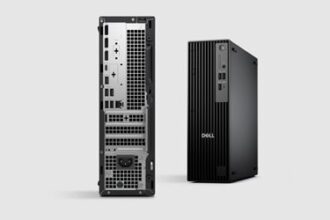Cloud computing vs on-premises solutions represent two distinct approaches to managing IT resources. Each model has its merits and challenges, making it essential for organisations to evaluate their unique needs before making a decision. Cloud computing typically offers greater scalability and flexibility, while on-premises solutions provide more control over security and compliance.

When considering costs, businesses must analyse not only the initial investment but also ongoing expenses such as maintenance and support. Security and privacy concerns often arise, as organisations weigh the risks of data breaches against the potential benefits of cloud services. Ultimately, the choice between cloud computing and on-premises infrastructure hinges on factors like organisational size, budget, and specific operational requirements.
Key Takeaways
- Cloud computing often provides better scalability and flexibility.
- On-premises solutions allow for greater control over security and compliance.
- Cost assessment includes both initial and ongoing expenses.
Defining Cloud Computing and On-Premises Models

Cloud computing and on-premises models represent two distinct approaches to IT infrastructure. Each offers unique characteristics that cater to different organisational needs.
Key Characteristics of Cloud Computing
Cloud computing provides a flexible, scalable environment where resources are delivered over the internet. Users can access cloud solutions like storage and processing power without the need for physical hardware.
Key characteristics include:
- Scalability: Resources can be scaled up or down based on demand, allowing organisations to adapt quickly to changing needs.
- Cost Efficiency: It typically involves a pay-as-you-go model, which can lead to lower upfront costs.
- Accessibility: Services are available anytime and anywhere with internet access, promoting remote work and collaboration.
Cloud infrastructure is managed by third-party service providers, reducing the burden of maintenance for the user.
Essential Features of On-Premises Solutions
On-premises systems refer to IT infrastructure that is physically located within an organisation’s premises. This model offers different advantages and challenges.
Essential features include:
- Control: Users have complete control over their systems, allowing for custom configurations tailored to specific needs.
- Security: Sensitive data remains within the organisation’s physical location, which can enhance security for some businesses.
- Initial Costs: Upfront investment in hardware and software can be significant, along with ongoing maintenance expenses.
While this model may limit scalability compared to cloud options, it can be preferable for enterprises with stringent compliance requirements or legacy systems.
Comparative Analysis of Costs

Cost considerations play a crucial role in deciding between cloud computing and on-premises solutions. This analysis focuses on capital and operational expenses, as well as the potential for cost efficiency and savings associated with each model.
Understanding Capital and Operational Expenses
In an on-premises setup, organisations face significant capital expenditures (CapEx). These include upfront costs for hardware, software licences, and infrastructure. Additionally, ongoing operational expenses (OpEx) are incurred for maintenance, support, and upgrades.
Conversely, cloud computing often employs a pay-as-you-go pricing model, converting substantial capital investments into predictable operating expenses. This structure reduces the need for hefty initial investments. Monthly fees cover services, allowing businesses to scale costs according to their usage.
Here’s a brief comparison of cost structures:
| Expense Type | On-Premises | Cloud Computing |
|---|---|---|
| Capital Expenditure | High | Low |
| Operational Expenses | Ongoing support and upgrades | Subscription-based fees |
Cost Efficiency and Savings
Cloud computing typically offers greater cost efficiency. Organisations can reduce infrastructure costs significantly while benefiting from the latest technology. Updates and maintenance performed by providers mitigate unexpected costs.
Moreover, pay-as-you-go pricing in cloud services allows businesses to adjust their resources and expenses based on their current needs. This level of flexibility often leads to cost savings compared to maintaining an entire on-premises infrastructure.
Factors affecting differences in cost include:
- Scale of operations
- Resource utilisation
- Long-term commitments
Many organisations find cloud solutions provide better financial predictability and lower infrastructure costs over time. This encourages a shift towards cloud environments, especially for businesses prioritising budget control and adaptability.
Security, Privacy, and Compliance

Security, privacy, and compliance are crucial factors when comparing cloud computing and on-premises solutions. Both models offer unique advantages but also present specific challenges in safeguarding data.
Data Security and Protection
Data security measures are fundamental in both cloud and on-premises environments. In cloud computing, providers often implement robust security practices that include data encryption both in transit and at rest. This method ensures that sensitive information remains inaccessible to unauthorised users.
Access control is another essential aspect. Cloud services typically offer advanced identification protocols, such as multi-factor authentication, to enhance user security. Regular security audits and monitoring can help identify vulnerabilities swiftly.
On-premises solutions offer organisations complete control over their data security but require significant investment in hardware and software. They must implement their own data protection strategies, which can include firewalls, intrusion detection systems, and regular data backups.
Regulatory and Compliance Factors
Adhering to regulatory requirements is crucial for both cloud and on-premises solutions. Various industries are subject to strict regulations that dictate how data must be handled and protected. For example, healthcare and finance sectors are subject to laws such as GDPR and HIPAA.
Cloud providers often invest heavily in compliance certifications, making it easier for organisations to meet regulatory standards. They typically conduct third-party audits to validate their security measures and privacy policies.
Conversely, organisations using on-premises solutions must ensure their infrastructure meets all regulatory requirements. This may necessitate hiring compliance specialists to create and maintain a compliant environment. Managing compliance can be a complex process, but it remains essential for data governance and risk management.
Deployment and Maintenance Considerations

Deployment and maintenance involve crucial factors that influence an organisation’s decision between cloud computing and on-premises solutions. Key considerations include the complexity of cloud migration and the ongoing requirements for maintaining IT infrastructure.
Cloud Migration and Implementation
Cloud migration involves transferring data, applications, and services from on-premises environments to cloud platforms. This process requires careful planning and execution to ensure minimal disruption. Organisations often assess their current infrastructure and determine which components are suitable for migration.
Implementation includes configuring the cloud environment, provisioning resources, and integrating applications. The choice of a public, private, or hybrid cloud affects the complexity and cost of migration. Potential latency issues can arise during data transfer, necessitating robust bandwidth and thorough testing.
Organisations must also consider data recovery and disaster recovery plans in the cloud to address potential service failures. Effective cloud migration ensures that software updates and patches are automated, minimising the effort required for ongoing maintenance.
Maintaining IT Infrastructure
Maintaining IT infrastructure varies significantly between cloud and on-premises environments. For on-premises systems, organisations bear the responsibility for hardware upkeep, software updates, and security measures. Regular maintenance schedules help in applying software patches, reducing vulnerabilities.
In contrast, cloud providers generally manage the physical hardware, allowing organisations to focus on software management. Automatic updates are common in cloud environments, ensuring systems are current without extensive manual intervention.
Additionally, organisations must establish monitoring systems to track performance and ensure compliance with service levels. Implementing effective strategies for data recovery and disaster recovery is crucial in both environments, ensuring business continuity in the event of disruptions. Adapting to these maintenance requirements is essential for optimising operational efficiency.
Flexibility, Scalability, and Accessibility

Cloud computing offers significant advantages in flexibility, scalability, and accessibility. These attributes are crucial for businesses looking to adapt to changing environments and foster collaboration. The following subsections explore how these aspects impact organisations in practical terms.
Adapting to Business Needs and Growth
Flexibility in cloud computing allows businesses to adjust resources based on current demands. Organisations can easily scale resources up or down without the need for substantial capital investment. This adaptability supports business continuity during periods of rapid growth or unexpected downturns.
Cloud environments enable a company to innovate quickly by facilitating the deployment of applications and services. The agility provided by cloud solutions means that teams can respond to market needs promptly, which is vital in competitive landscapes. With infrastructure managed by a cloud provider, companies can concentrate their efforts on their core business objectives rather than on IT management.
Global Access and Collaborative Work
Accessibility is another core advantage of cloud computing. It allows teams to access data and applications from anywhere, provided there is an internet connection. This feature is critical for organisations with remote workforces or multiple locations.
Moreover, cloud solutions enhance collaboration among team members. Tools such as shared documents or real-time editing capabilities foster an environment of innovation. Low latency impacts overall productivity, ensuring that even remote teams can work seamlessly together, thereby accelerating project timelines and improving efficiency.
Ultimately, these characteristics position cloud computing as an attractive solution for organisations aiming to maintain a competitive edge.
Frequently Asked Questions

This section addresses common queries regarding cloud computing and on-premises solutions. It explores their key differences, advantages, cost factors, security aspects, selection considerations, and scalability.
What are the key differences between on-premises and cloud-based solutions?
On-premises solutions require physical infrastructure and maintenance on-site, while cloud-based solutions operate via remote servers managed by service providers. Deployment, management, and updates differ significantly, affecting how businesses utilise technology.
What advantages does cloud computing offer compared to on-premises infrastructures?
Cloud computing provides flexibility and accessibility, allowing users to access resources from anywhere with an internet connection. It also reduces the need for extensive hardware investments and enables faster deployment of applications and services.
How do the costs of cloud services compare with on-premises solutions?
Cloud services typically follow a pay-as-you-go model, which can be cost-effective for businesses. In contrast, on-premises solutions involve upfront capital expenditures for hardware and ongoing maintenance costs.
In terms of security, how do on-premises systems contrast with cloud environments?
On-premises systems offer direct control over security measures, but they rely on the organisation’s resources. Cloud environments benefit from the expertise of cloud service providers, who implement advanced security protocols and regular updates.
What are the considerations for choosing between on-premises, cloud, and hybrid models?
Choosing among these models depends on factors such as budget, regulatory compliance, and operational needs. Organisations must evaluate their capacity for managing infrastructure and determine whether scalability or control is a priority.
How does the scalability of cloud platforms compare with on-premises setups?
Cloud platforms allow for rapid scaling in response to changing demand, often in real-time. On-premises setups require significant investment and time to expand capabilities, limiting flexibility in resource allocation.
More topics can be found here
WIKI information can be found here






